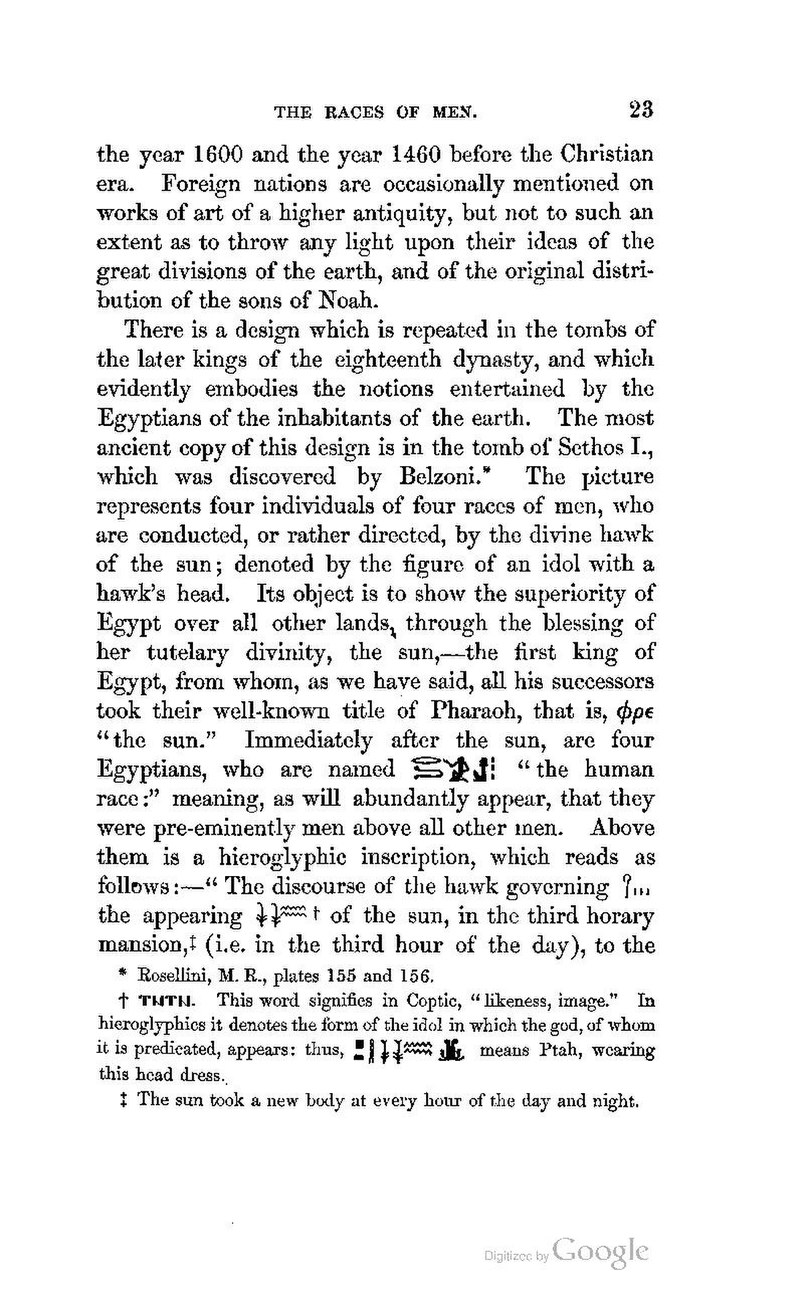the year 1600 and the year 1460 before the Christian era. Foreign nations are occasionally mentioned on works of art of a higher antiquity, but not to such an extent as to throw any light upon their ideas of the great divisions of the earth, and of the original distribution of the sons of Noah.
There is a design which is repeated in the tombs of the later kings of the eighteenth dynasty, and which evidently embodies the notions entertained by the Egyptians of the inhabitants of the earth. The most ancient copy of this design is in the tomb of Sethos I., which was discovered by Belzoni.[1] The picture represents four individuals of four races of men, who are conducted, or rather directed, by the divine hawk of the sun; denoted by the figure of an idol with a hawk's head. Its object is to show the superiority of Egypt over all other lands, through the blessing of her tutelary divinity, the sun,—the first king of Egypt, from whom, as we have said, all his successors took their well-known title of Pharaoh, that is, φρε “the sun.” Immediately after the sun, are four Egyptians, who are named
| |
“the human race:” meaning, as will abundantly appear, that they were pre-eminently men above all other men. Above them is a hieroglyphic inscription, which reads as follows:—“The discourse of the hawk governing
| |
the appearing
| |
[2] of the sun, in the third horary mansion,[3] (i.e. in the third hour of the day), to the
- ↑ Rosellini, M. R., plates 155 and 156.
- ↑ ⲧⲛⲧⲛ This word signifies in Coptic, “likeness, image.” In hieroglyphics it denotes the form of the idol in which the god, of whom it is predicated, appears: thus,
![Q3 [p] p](/w/extensions/wikihiero/img/hiero_Q3.png?42130)
![X1 [t] t](/w/extensions/wikihiero/img/hiero_X1.png?f2a8c)
![V28 [H] H](/w/extensions/wikihiero/img/hiero_V28.png?f1179)


![N35 [n] n](/w/extensions/wikihiero/img/hiero_N35.png?fcc27)
![N35 [n] n](/w/extensions/wikihiero/img/hiero_N35.png?fcc27)
 means Ptah, wearing this head dress.
means Ptah, wearing this head dress.
- ↑ The sun took a new body at every hour of the day and night.
